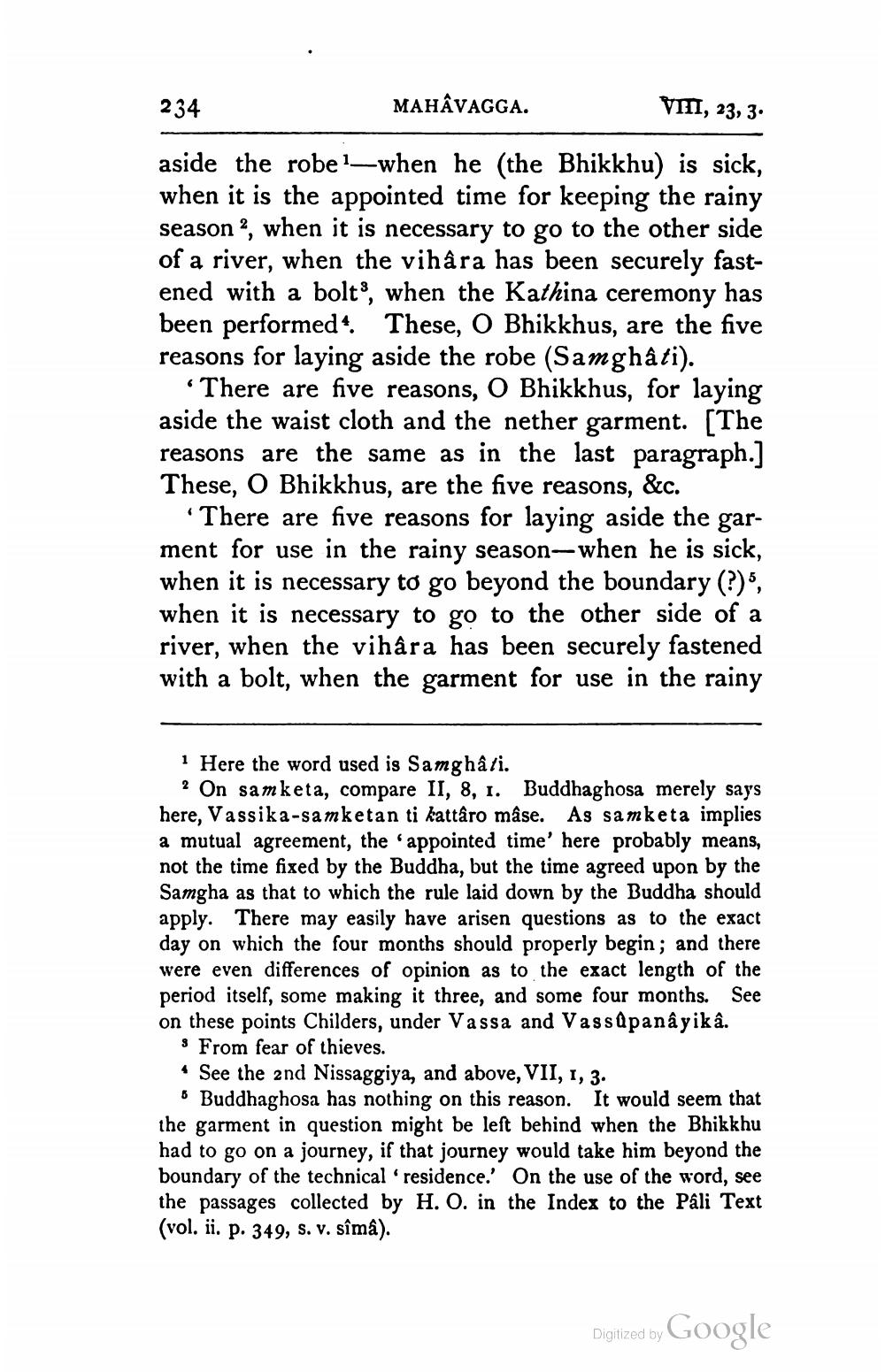________________
234
MAHÂVAGGA.
VITI, 23, 3.
aside the robe 1—when he (the Bhikkhu) is sick, when it is the appointed time for keeping the rainy season 2, when it is necessary to go to the other side of a river, when the vihâra has been securely fastened with a bolto, when the Kathina ceremony has been performed. These, O Bhikkhus, are the five reasons for laying aside the robe (Samghati).
There are five reasons, O Bhikkhus, for laying aside the waist cloth and the nether garment. [The reasons are the same as in the last paragraph.] These, O Bhikkhus, are the five reasons, &c.
There are five reasons for laying aside the garment for use in the rainy season, when he is sick, when it is necessary to go beyond the boundary (?)5, when it is necessary to go to the other side of a river, when the vihâra has been securely fastened with a bolt, when the garment for use in the rainy
i Here the word used is Samghali.
? On samketa, compare II, 8, 1. Buddhaghosa merely says here, Vassika-samketan ti kattaro mâse. As samketa implies a mutual agreement, the appointed time' here probably means, not the time fixed by the Buddha, but the time agreed upon by the Samgha as that to which the rule laid down by the Buddha should apply. There may easily have arisen questions as to the exact day on which the four months should properly begin; and there were even differences of opinion as to the exact length of the period itself, some making it three, and some four months. See on these points Childers, under Vassa and Vassapanâyika.
s From fear of thieves. • See the 2nd Nissaggiya, and above, VII, 1, 3.
o Buddhaghosa has nothing on this reason. It would seem that the garment in question might be left behind when the Bhikkhu had to go on a journey, if that journey would take him beyond the boundary of the technical residence. On the use of the word, see the passages collected by H. O. in the Index to the Pali Text (vol. ii. p. 349, s. v. sîmâ).
Digitized by
Digilzed by Google




